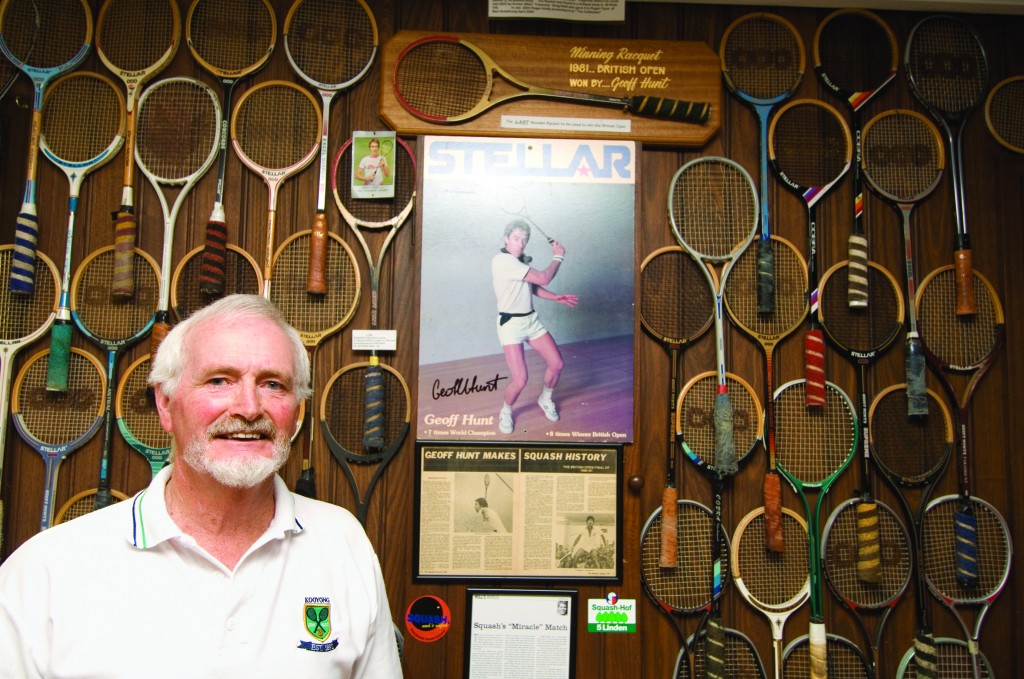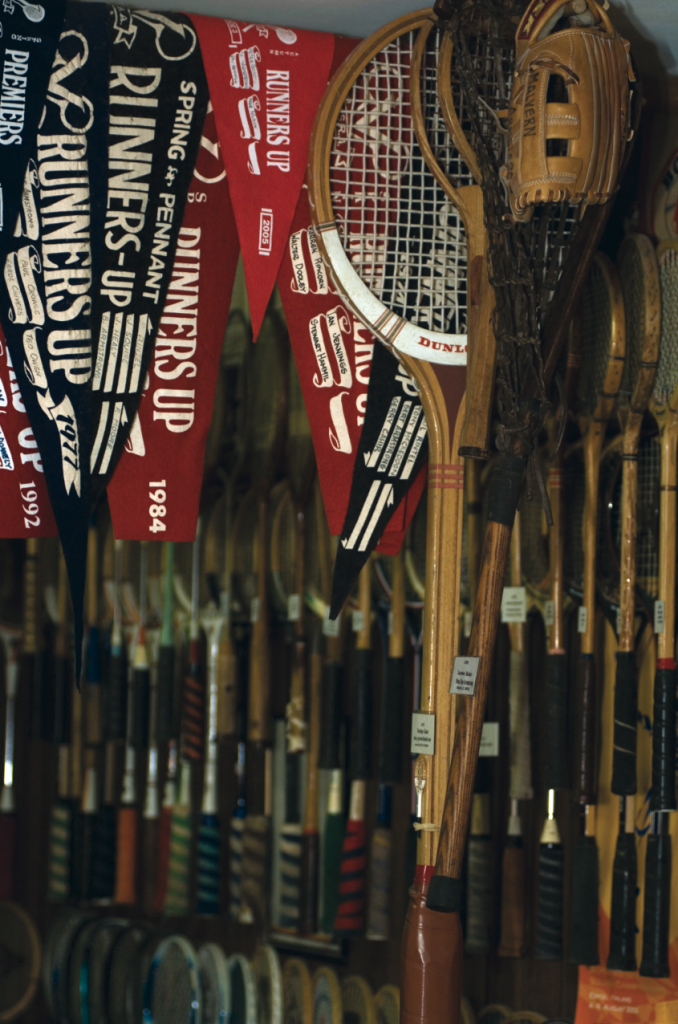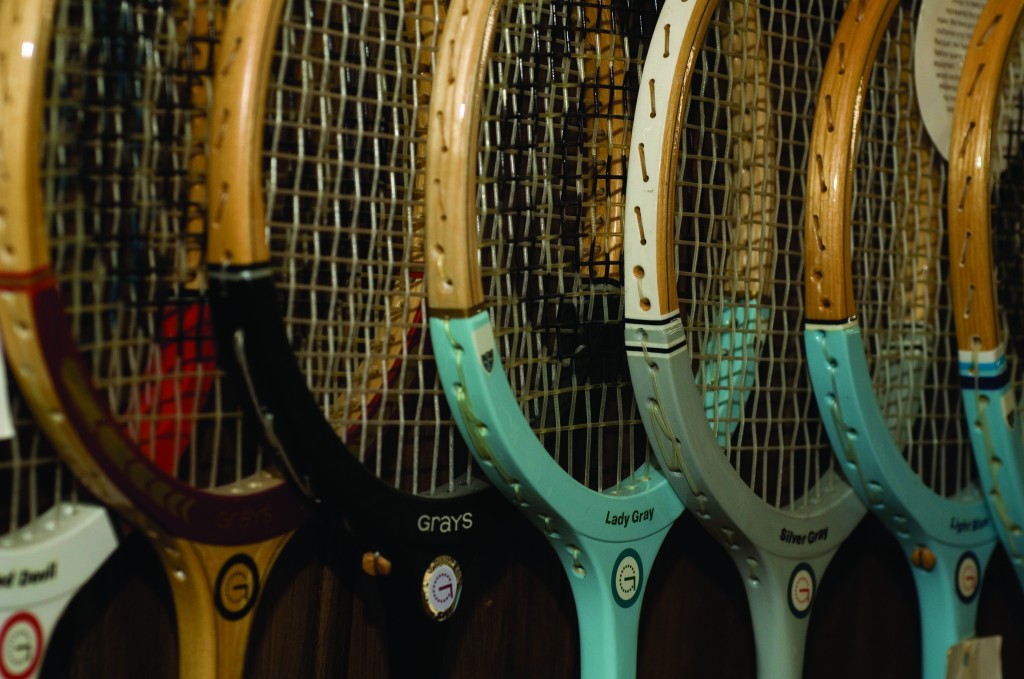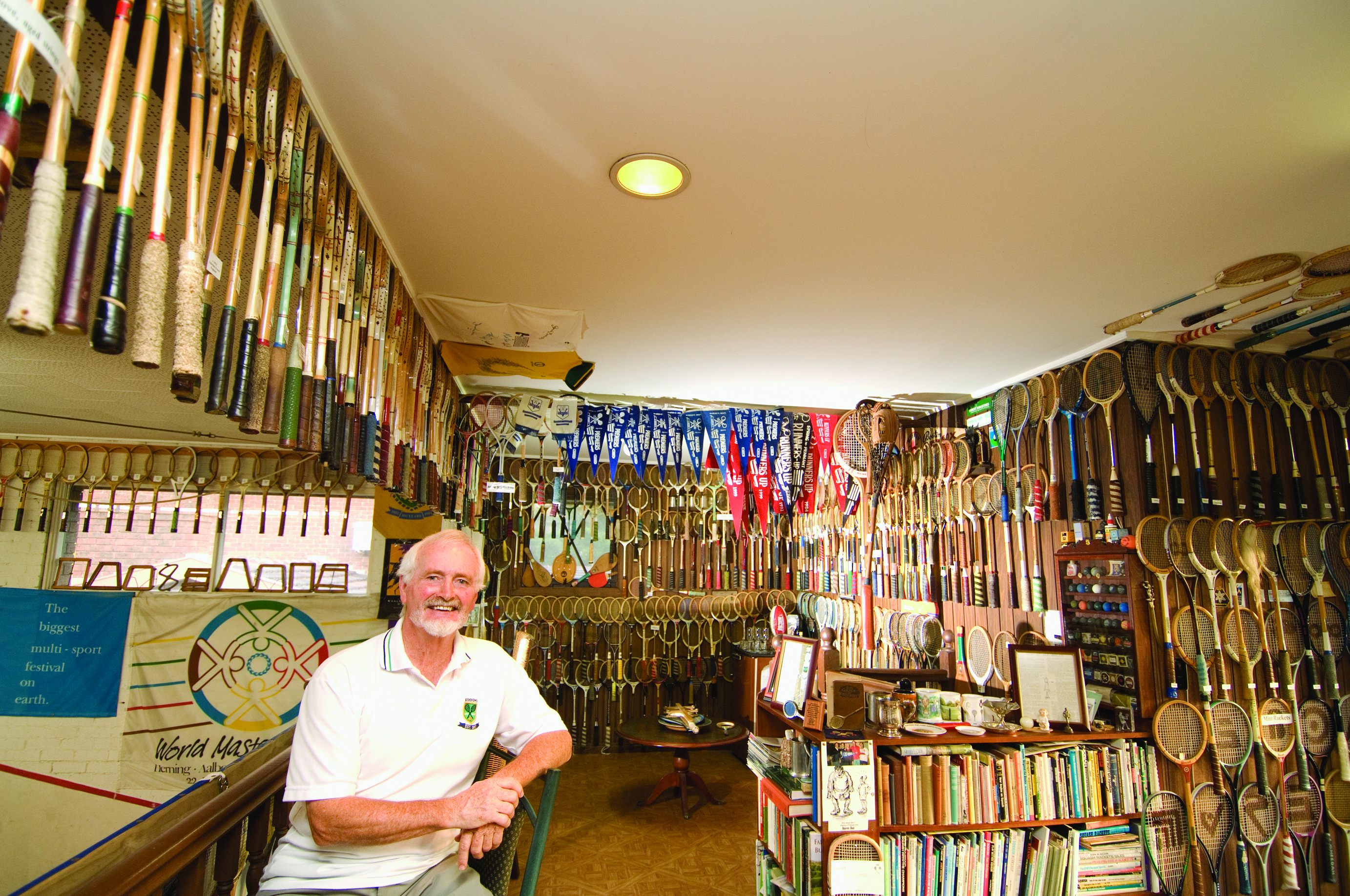

By James Zug
Photos courtesy of Bert Armstrong
Looking for an old book? How about a British Open racquet from Geoff Hunt? A Johnny Skillman letter? A Sarah Fitz-Gerald stamp? A1907 squash salt trophy?
Go to Melbourne. There in Australia’s loveliest city is the world’s greatest collection of squash memorabilia. I wrote about it last September in The Direct, my monthly blog at the US Squash website, and so many people asked to see photographs—”just what does eight hundred racquets look like?”—that we are running these unique photographs.
About twenty years ago Bert Armstrong started collecting old racquets from friends who played on the squash court he built at his house. Armstrong, a retired mechanical engineer, cereal farmer and real estate developer, is a pretty decent player and got to the quarters of the World Masters one year in Toronto.
Today he owns about eight hundred racquets. There are nearly two hundred different brand names from twenty-four countries. His earliest bat dates from 1890 (a Salter Aldershot). He owns racquets made of ash, bamboo, willow, cane, graphite, steel, aluminum, composite and kevlar; dozens are brand-new, mint-condition, still in wrapping.
 One racquet not in wrapping is Geoff Hunt’s Stellar, which he used to win the 1981 British Open. That victory is arguably the most thrilling British Open in history. Hunt, at age 34, was in the twilight of his career, while Jahangir Khan was astonishingly ascendent at age 17. A fortnight before the Open, Hunt squandered a 4-1 lead in the fourth, up 2-1, to lose the Chichester final to Jahangir. It was a two hour, 11 minute match. So sixteen days later Hunt v. Jahangir, at the Churchill Theatre in Bromley, looked bad when it too went past the two hour mark. This time Jahangir was up 6-1 in the fourth (but down 1-2 in games) and cruising towards a fifth game and certain victory. Hunt dug into resources unknown and escaped 9-7.
One racquet not in wrapping is Geoff Hunt’s Stellar, which he used to win the 1981 British Open. That victory is arguably the most thrilling British Open in history. Hunt, at age 34, was in the twilight of his career, while Jahangir Khan was astonishingly ascendent at age 17. A fortnight before the Open, Hunt squandered a 4-1 lead in the fourth, up 2-1, to lose the Chichester final to Jahangir. It was a two hour, 11 minute match. So sixteen days later Hunt v. Jahangir, at the Churchill Theatre in Bromley, looked bad when it too went past the two hour mark. This time Jahangir was up 6-1 in the fourth (but down 1-2 in games) and cruising towards a fifth game and certain victory. Hunt dug into resources unknown and escaped 9-7.
It was Hunt’s eighth (then a record) and last British Open. Jahangir didn’t lose for another five and a half years. Is there a more valuable racquet in the world?
Armstrong owns just about everything to do with squash: first-day cover stamps, tankards, banners, neckties, mirrors, postcards, videos, posters, money clips, badges, spoons and racquet covers. He owns a handwritten, signed letter from Sir Donald Bradman, cricket’s Barry Bonds (without steroids or a helmet), telling how he won the 1939 South Australian squash championship.
Browsing at Ebay, flea markets, antique shops and the occasional visit to book towns like Hay-on-Wye, Armstrong has amassed nearly two hundred books (nearly half were published in the 1970s). He has the 1901 Eustace Miles, both the British and U.S. editions; he has a signed leather-bound book of Heather McKay that was produced in an edition of eight. He has every book by Jonah Barrington’s (our game’s most prolific champion-turned-author). He doesn’t own a hardback version of my history of US squash: too new.
![“I live in Melbourne, about 20 minutes from downtown. I built the court 25 years ago and wrapped the house around it. It’s been a lot of fun. I’m 66 but still have a whack, play open age competition for Kooyong Lawn Tennis Club. [I’ve never been] much good, just a runner who tried to take it early. Best effort was quarterfinals in the Toronto World Masters games. I have played in every other World Masters with limited success. As far as I’m aware, squash collectors are a rare breed, possibly a dozen serious scattered worldwide.” —Bert Armstrong](https://squashmagazine.ussquash.com/wp-content/uploads/2014/11/DSC2259-1024x679.jpg)
Armstrong has spent as much at $450 (for an giant Dunlop Maxply demonstration racquet) and as little as free (most of his racquets have been gifts from friends who know of his yen). His wife, Jo, is most understanding of this collecting mania. She too collects things (porcelain, sewing implements,) and, more importantly, plays squash.
It is easy to play squash at the Armstrong house—never a shortage of racquets.
To connect with Armstrong and find out how much that 1983 Insilco tee-shirt is worth, email him at bertarm@bigpond.net.au.






